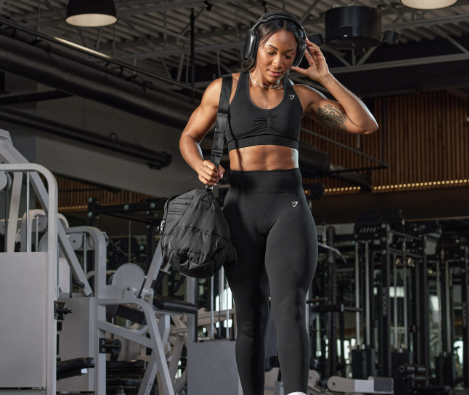
Starting a cardio routine at the gym can be overwhelming, especially if you’re unsure where to begin. How hard should you push yourself? How long should your sessions last? It’s easy to get confused, but don’t worry – we’ve got you covered. Cardio exercises are essential for improving heart health, boosting energy, promoting weight loss, and enhancing mental well-being. In this post, we’ll break down an ideal cardio workout plan for beginners so you can make the most of your sessions and feel confident in your fitness journey.
Understanding Workout Intensity
One of the most important aspects of cardio is maintaining the right intensity. It’s crucial to push yourself enough to see results, but not to the point where it’s too challenging or exhausting. Here are a few ways to monitor and adjust your workout intensity:
- The Talk Test: If you can carry on a conversation but can’t sing, you’re at the right intensity level. This is a simple and effective way to gauge your effort during your workout.
- Heart Rate Monitoring: Using a heart rate monitor can help you track your pulse and ensure you’re working at a moderate intensity. Aim for 50-70% of your maximum heart rate.
- Perceived Exertion: Rate your effort on a scale of 1 to 10. For a moderate workout, aim for a rating of 5 to 7. If it feels too easy, increase the intensity, and if it feels too tough, dial it back a little.
Cardio Routine for Beginners
As a beginner, it’s best to keep your cardio workouts simple and enjoyable. Start with low-impact activities like walking, jogging, or cycling. These exercises are great for building endurance without overwhelming your body. To keep things fresh, vary your workouts regularly to stay motivated and challenge yourself.
Treadmill Routine for Beginners
Begin with a light 5-minute warm-up on the treadmill. Then, alternate between brisk walking and jogging for 20 minutes. Finish with a 5-minute cool-down. This routine targets your cardiovascular health while improving overall fitness.
- Warm-Up (5 mins): Walk at 3.2-3.5 mph to get your muscles warmed up.
- Main Workout (20 mins): Alternate between a fast walk/jog (3.6-4.0 mph) for 2 minutes and a brisk walk (3.0-3.5 mph) for 1 minute.
- Cool-Down (5 mins): Gradually slow your pace to bring your heart rate down.
Elliptical Routine
Start your elliptical session with a light pace for 5 minutes. Afterward, alternate between moderate and high resistance for 15-20 minutes. Finish with a cool-down at a light pace.
- Warm-Up (5 mins): Set resistance to a low level (1-3).
- Main Workout (15-20 mins): Alternate between moderate resistance (level 5-6) for 2 minutes and high resistance (level 7-8) for 1 minute.
- Cool-Down (5 mins): Gradually decrease resistance and slow your pace.
Stationary Bike Routine
Start by cycling at a low resistance for 5 minutes to warm up. Then, cycle at a moderate pace for 15-20 minutes. Finish with a 5-minute cool-down to bring your heart rate down.
- Warm-Up (5 mins): Cycle at low resistance.
- Main Workout (15-20 mins): Maintain a steady pace with moderate resistance.
- Cool-Down (5 mins): Gradually reduce resistance and pace.
The Importance of Cooling Down and Stretching
Always conclude your cardio session with a cool-down period. Walk at a gentle pace for 5 minutes to gradually lower your heart rate, followed by 5 minutes of static stretching. Focus on stretching your legs, hips, and back to help your muscles recover and improve flexibility.
Why Cardio is Essential for Beginners
Cardio offers numerous benefits, both physical and mental, that can significantly improve your health and well-being. Here’s why you shouldn’t skip your cardio workouts:
Physical Benefits
- Heart Health: Cardio exercises strengthen your heart and improve blood circulation, reducing your risk of cardiovascular diseases.
- Increased Energy: Regular cardio helps your body use oxygen more efficiently, resulting in higher energy levels and reduced fatigue.
- Improved Endurance: Cardio builds stamina, making daily tasks easier and less tiring.
- Stronger Immune System: A consistent cardio routine boosts your immune system, helping you stay healthy and fight off illnesses.
Mental Benefits
- Reduced Stress: Cardio stimulates the release of endorphins, which can improve your mood and reduce anxiety.
- Increased Confidence: As you become fitter, you’ll likely feel better about your body and your abilities, boosting your self-esteem.
- Better Sleep: Cardio improves sleep quality, making it easier to fall asleep and wake up feeling refreshed.
- Improved Focus: Regular cardio helps with mental clarity and focus, allowing you to stay sharp throughout the day.
Expert Tips for Cardio Beginners
Starting a new cardio routine can feel challenging, but with the right approach, it will become a natural part of your routine. Here are some tips to help you succeed:
- Warm Up Properly: Always spend 5-10 minutes warming up with light activities. This prepares your body for more intense exercises and reduces the risk of injury.
- Ease Into It: Start with shorter sessions and gradually increase the duration and intensity. Avoid pushing yourself too hard early on to prevent burnout or injury.
- Pay Attention to Your Body: If something hurts or feels off, take a break. It’s better to rest and come back stronger than to risk injury.
- Stick to a Routine: Consistency is key to seeing progress. Aim for at least 3-4 cardio sessions per week and make it part of your regular schedule.
- Find a Workout Buddy: Working out with a friend can make your cardio sessions more enjoyable and keep you motivated.
- Take It Outdoors: Try outdoor activities like running in the park or cycling around your neighborhood. It’s a great way to mix things up and enjoy the fresh air.
- Make It Fun: Choose activities you enjoy, such as dancing, biking, or swimming. Fun workouts are easier to stick with and help you stay motivated.
- Track Your Progress: Monitor your heart rate and fitness progress with a heart rate monitor. This provides feedback on how well you’re doing and helps you stay on track.
- Hydrate and Fuel Up: Drink plenty of water before, during, and after your workouts. Stay hydrated to maintain peak performance, and fuel your body with nutritious food to keep your energy levels high.
Kickstart Your Cardio Journey
Now that you have a clear understanding of how to approach cardio workouts as a beginner, it’s time to put your plan into action. Start with low-intensity exercises like walking or cycling, and gradually increase the duration and intensity of your sessions. Remember to listen to your body, stay consistent, and have fun with your workouts. With the right mindset and routine, you’ll soon notice improvements in both your physical and mental well-being.










